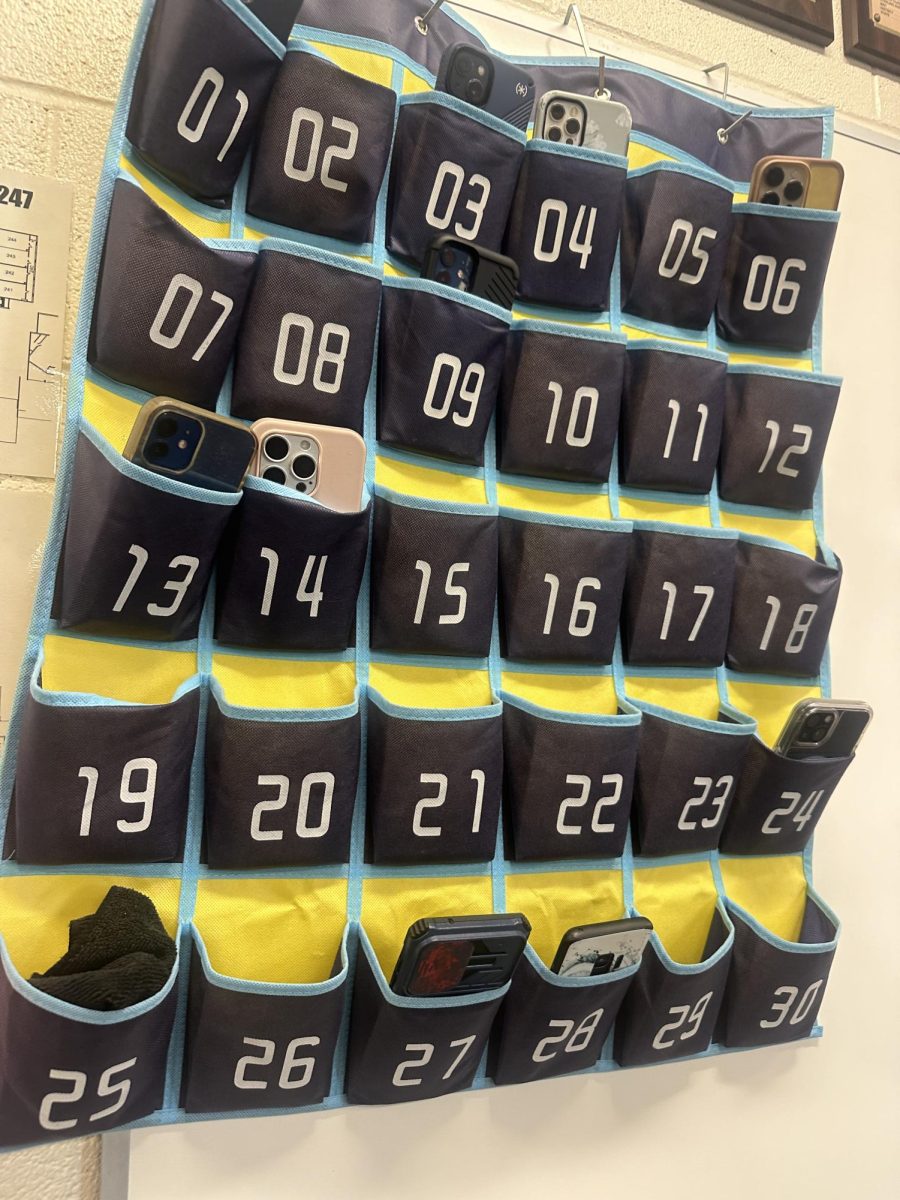
Mackenzie Fah
Students phones in the designated cell phone parking lot. PVHS is cracking down on phone usage during the 2024-2025 school year. Yet, the PV rules are among the tamer of school districts in the area.
Upon the start of the school year, PV students were greeted with new rules and policies regarding phone usage in the classroom due to declining test scores and rising mental health concerns.
In recent years, many high schools, including PV, have tried to implement simple cell phone policies to prevent distractions and improve productivity. During any given class period throughout the day, numerous students could be found roaming the halls engaged in their phones, taking a break or burning time. PV’s new policies aim to eliminate this.
This year, many school districts across the country have decided to tighten these restrictions once again. Davenport Community School District is among the local schools to do so. At Davenport Central High School, students relinquish their phones to a folder for the entirety of the school day.
Students can pick up their cellular devices at the end of the day but are obligated to forgo phone usage during lunch, study halls and any free time throughout their schedule. “I wouldn’t want to do something like that and I would hate it. I think it’s stupid and unsafe,” stated senior Reagan Pagniano.
Unlike Pagniano, senior Katie Miller sees value in the stricter policies similar to those implemented at Davenport. “Even though I personally don’t think I would like that solution to the phone issues, I can see why the schools want to enforce a policy like that,” said Miller.
While such procedures may come across as excessive to some, compelling statistics advocate for these policies. A class of ninth grade students proved those who followed the phone-free program had the highest GPA’s throughout the whole school.
For over a decade, American students’ test scores have continued to decrease in synchronicity with the inclined phone presence in the classroom. Students who spend less than an hour of leisure time on digital devices a day scored up to 50 points, or 25%, higher on standardized math tests than students who spend five hours per day on devices.
Schools are aiming to limit phone usage in various ways in order to reap these benefits. PV’s new phone policy enforces keeping phones in zipped backpacks or in each classroom’s phone parking lot for the entire duration of each class. New to the ‘24-’25 school year is the requirement of putting phones in the parking lot before leaving the room during class.
Although PV has chosen a less extreme approach compared to the other districts’ policies, students are nonetheless feeling the effects. “When I put my phone away I feel like I get more done, and am able to retain more of what I am studying,” Miller said.
PV’s implementation of these new rules brings them increasingly closer to a system like Davenport’s. With compelling studies and statistics being released about phone usage in the classroom, it’s clear to see why these new rules are being implemented. What is yet to be determined is the extent to which schools will go to achieve improved test scores and productivity.
